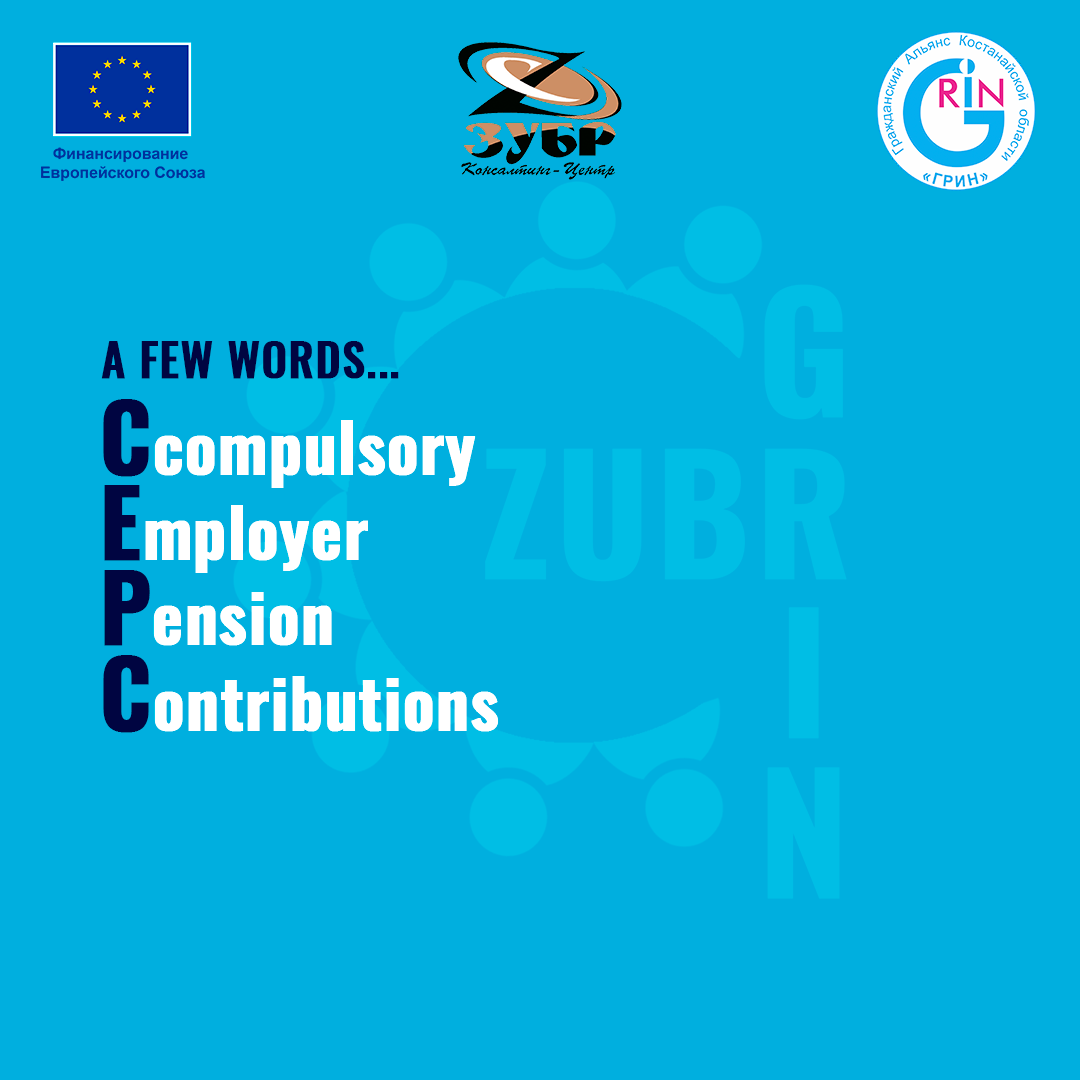Dear colleagues, partners, friends!
We continue to implement the project «Dialogue between civil society and government — the way to a high quality of life» with the financial support of the European Union. The project is aimed at strengthening the influence of civil society organisations through participation in the evaluation of government programmes in the Republic of Kazakhstan.
And today, we want to share our thoughts on a measure such as a compulsory employer pension contributions (CEPC — 1.5 per cent), in addition to the 10 per cent CEPC withheld from the employee.
A little digression….
As part of the public expertise conducted by the project team, we learnt the opinions of employees and employers about what they think about the implementation of this measure. It is important for us to understand how this measure is understood and perceived by the participants themselves (those who pay and those who will benefit from it). But we will write about the results a little later, after we have processed the data.
The idea of introducing compulsory employer pension contributions (CEPC) has been discussed in the country for the past few years. It is laid down in the Concept of further modernisation of the pension system of the Republic of Kazakhstan until 2030, adopted back in 2014.
According to the forecasts of the Ministry of Labour and Social Protection of the Republic of Kazakhstan, the solidarity pension will be assigned to future pensioners only until 2043. As a result, Kazakhstan citizens born after 1975 will either not receive a solidarity pension at all or will receive a very small part of it.
The introduction of CEPC is intended to replace the solidarity pension. Without it, Kazakhstanis would be left with only the basic and funded parts. But these funds would hardly be enough, given that not everyone today makes regular contributions to the EPPF, and many people used their savings to improve their housing conditions and medical treatment.
How effective will the CEPC measure become?
According to the Ministry of Labour and Social Protection of the Population of the Republic of Kazakhstan, the introduction of the CEPC will allow to maintain the replacement rate of lost earnings at least at the level of not less than 40%.
As one of the justifications for this decision, the state body cites international experience in involving employers in the pension system through additional contributions:
- in Germany, employers contribute 9.3% to the pension fund on behalf of the employee;
- 9.5% in Australia;
- 14% in Norway;
- 20% in Singapore;
- 28% in Belarus.
Contributors will be able to see the receipt of this type of contributions in the individual pension account statement, which provides information on all types of contributions. At the same time, the funds themselves will be accumulated not in individual accounts of employees, but in separate notional savings accounts. In other words, the CEPC will not be the property of the employee.
From 2038 onwards, retired people will receive them for life (starting from the date of application for payment), but only those for whom contributions have been made for at least 60 calendar months in aggregate (workers born after 1975).
Payments will not be fixed. They will be reviewed annually based on the number of participants in the pension system and the investment income received. The maximum pension payment at the expense of CEPC cannot exceed 2 times the subsistence minimum for the relevant financial year. As a reminder, in 2024 the additional payment for employees is 1.5 per cent of the employee’s income, and it is planned to gradually increase it to 5 per cent by 2028.
Even if there are no funds left in the employee’s escrow account, the employee will still receive lifetime benefits at the expense of other participants in the system (pay-as-you-go principle).
Since the CEPC will not be the property of the employee, they cannot be inherited or withdrawn early, and they will not be subject to the government’s guarantee of safety of funds. They would be distributed from the rich to the poor, from the dead or departed to those left behind.
What do you think about that? Share your opinion!
There are many more exciting events and activities ahead. Keep an eye on our news to make sure you don’t miss out!
The project is implemented by ZUBR Consulting Centre in partnership with the Civil Alliance of Kostanay region «GrIn» PF.
